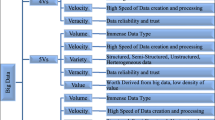Abstract
Coronary Heart Disease (CHD) is the most common cardiovascular disease which has the highest mortality rate in developing countries. To predict and prevent the risk of CHD in its early stages from remote sites, real time monitoring and analysis of an individual’s health statistics is required. Cloud based cyber-physical systems facilitate the alliance of devices in the physical world i.e. cameras, sensors and Geographical Positioning System devices with cyber world to generate the required information. Then it uses cyber world to analyze and share medical information along with localization data with healthcare service providers. Moreover, with the ability to transmit intensive information anytime and anywhere, this technological revolution has raised the level of effective healthcare deliverance. With these aspects, cloud based cyber-physical localization system is proposed to identify the risk level of CHD using adaptive neuro fuzzy inference system at an early stage. The users who are in the middle or high risk category will be monitored continuously to keep track of their electrocardiogram (ECG) readings. In case of any abnormality in ECG readings, an alert will be immediately sent to the user’s mobile phone as well as to the healthcare service providers or professionals to take immediate or necessary action on time for patient’s wellness. It also provides preventive measures and medication according to the risk category of the user. The experimental results reveal that the proposed system efficiently and effectively classifies the risk of CHD as well as utilizes minimum response time in generation of alerts on the basis of ECG readings.









Similar content being viewed by others
References
World Health Organization. Cardiovascular Diseases. http://www.who.int/mediacentre/factsheets/fs317/en/. Last Accessed on December 12, 2017.
American Heart Association. Heart Disease and Stroke Statistics—2014 update. https://circ.ahajournals.org/content/early/2013/12/18/01.cir.0000441139.02102.80.full.pdf. Last Accessed on December 12, 2017.
Cardiovascular Disease. Risk Factors. http://www.world-heartfederation.org/fileadmin/user_upload/documents/Fact_sheets/2012/pressBackgrou-nderApril2012RiskFactors.pdf. Last Accessed on December 12, 2017.
Shu, Z., Wan, J., Zhang, D., & Li, D. (2016). Cloud integrated cyber physical systems for complex industrial applications. Mobile Networks and Applications, 21(5), 865–878.
Muthukaruppan, S., & Er, M. J. (2012). A hybrid particle swarm optimization based fuzzy expert system for the diagnosis of coronary artery disease. Expert Systems with Applications, 39(14), 11657–11665.
Yang, J. G., Kim, J. K., Kang, U. G., & Lee, Y. H. (2013). Coronary heart disease optimization system on adaptive-network-based fuzzy inference system and linear discriminant analysis (ANFISLDA). Personal and Ubiquitous Computing, 18(6), 1351–1362.
Pandey, S., Voorsluys, W., Niu, S., Khandoker, A., & Buyya, R. (2012). An autonomic cloud environment for hosting ECG data analysis services. Future Generation Computer Systems, 28(1), 147–154.
Xia, H., Asif, I., & Zhao, X. (2013). Cloud-ECG for real time ECG monitoring and analysis. Journal of Computer Methods and Programs in Medicine, 110(3), 253–259.
Lyu, Y., Hong, J., Wei, Y., Yang, J., Tang, Y., Wang, W., et al. (2015). Dynamic evaluation model of coronary heart disease for ubiquitous healthcare. Computers in Industry, 65(1), 35–44.
Haque, S. A., Aziz, S. M., & Rehman, M. (2015). Review of cyber-physical system in healthcare. International Journal of Distributed Sensor Networks. https://doi.org/10.1155/2014/217415.
Shah, T., Yavari, A., Mitra, K., Saguna, S., Jayaraman, P. P., Rabhi, F., et al. (2016). Remote Healthcare cyber physical system: Quality of service challenges and opporunities. IET Cyber Physical Systems Theory and Applications, 2(1), 4048.
Mitchell, R., & Chen, I. R. (2015). Behavior rule specification based intrusion detection for safety critical medical cyber physical system. IEEE Transaction on Dependable and Secure Computing, 12(1), 16–30.
Costanzo, A., Faro, A., Giordano, D., & Pino, C. (2016). Mobile cyber physical system for healthcare: Functions, ambient ontology and e-diagnostics. In 13th IEEE annual consumer communication and networking conference. https://doi.org/10.1109/CCNC.2016.7444920.
Prittopaul, P., Sathya, S., & Jayasree, K. (2015). Cyber physical system approach for heart attack detection and control using wireless monitoring and actuation system. In IEEE sponsored 9th international conference on intelligent systems and control. https://doi.org/10.1109/ISCO.2015.7282352.
Jang, J. S. R. (1993). ANFIS: Adaptive-network-based fuzzy inference system. IEEE Transaction on Systems, Man, and Cybernetics, 23(3), 665–684.
Won, J. M., Park, S. Y., & Lee, J. S. (2002). Parameter conditions for monotonic takagisugenokang fuzzy system. Fuzzy Sets and Systems, 132(2), 135–146.
Sun, Y., Li, J., Liu, J., Sun, B., & Chow, C. (2014). An improvement of symbolic aggregate approximation distance measure for time series. Neurocomputing, 138(6), 189–198.
UCI Machine Learning Repository: Heart Disease Data Set. https://archive.ics.uci.edu/ml/datasets/Heart+Disease. Last Accessed on December 22, 2017.
Bystrov, D., & Westin, J.: Practice Neuro Fuzzy Logic Systems Matlab Toolbox GUI. ch, 2, 8–39.
Tutuncu, G. Y., & Kayaalp, N. (2015). An aggregated fuzzy naive bayes data classifier. Journal of Computational and Applied Mathematics, 286(1), 17–27.
Cheng, C. H., & Mon, D. L. (1993). Fuzzy system reliability analysis by interval of confidence. Fuzzy Sets and Systems, 56(1), 29–35.
Author information
Authors and Affiliations
Corresponding author
Rights and permissions
About this article
Cite this article
Sood, S.K., Mahajan, I. A Fog Assisted Cyber-Physical Framework for Identifying and Preventing Coronary Heart Disease. Wireless Pers Commun 101, 143–165 (2018). https://doi.org/10.1007/s11277-018-5680-y
Published:
Issue Date:
DOI: https://doi.org/10.1007/s11277-018-5680-y




